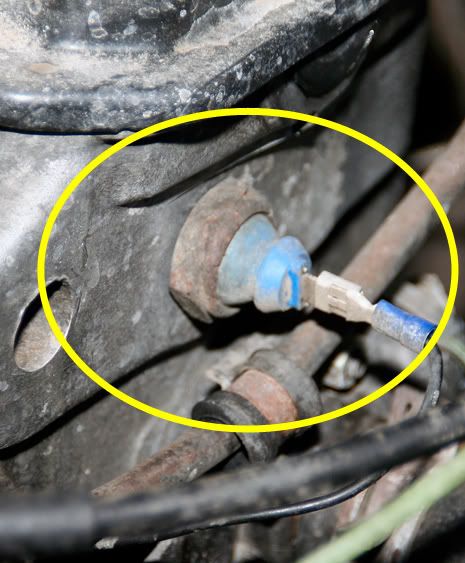VAG vehicles have been using DOP (dynamic oil pressure) since the 80's, this means that two oil pressure switches and engine RPM is used to determine oil pressure rather than the system of a single switch. Low oil pressure problems are typical of high-mileage VAG cars with worn bearings and oil that is hot (and thin). The combination of thin oil and worn main bearings means that the oil pressure is marginal at lower RPM where the oil pump is not spinning as fast as it does when driving - hence the DOP system...
To check your sensors and hence oil pressure:
The first one to do is the one on the side of the cylinder head. This is a conventional low-pressure sensor. It is normally closed and opens at (I think) 0.3 bar on a tdi.
The van instrument cluster always 'monitors' this sensor, and when it switches the low pressure light comes on. This is the sensor that switches on the low oil pressure light when you turn the key before starting. This sensor is not connected to the oil pressure warning buzzer. It is connected to the wiring harness with a blue/black wire. To check this sensor, turn the ignition on; the oil pressure warning light should come on (flash) thanks to the low pressure sender on the cyl. head. If the light doesn’t come on there’s a problem with the low pressure sender, the wiring to that sender, or the dash cluster. A test light between the sensor and the positive battery post should light when the van is off and go out when the van is idling, if the sensor (and oil pressure) is ok.
The second sensor is normally open and closes at a fairly high pressure depending on engine type (1.4 bar for normally aspirated diesels and some TDs, and 1.9 bar for MK3 tdi (again - I think)).
![Image]()
The instrument cluster only monitors this sensor when the engine is over 1800 - 2000RPM and if this sensor is not switched by 1800-2000 RPM the oil buzzer will sound and the oil pressure light will also flash. It’s typically white, grey, or black in colour and is connected to the wiring harness with a yellow wire. To test this sensor, Disconnect the wire to the high pressure sensor on the filter flange and let it float. The oil buzzer should now come on when the van is above 2000 RPM. Now ground the yellow wire and rev the engine past 2000 RPM… the buzzer should not sound at all. If you fail either of these tests you have sensor issues, wiring, alternator wiring, or instrument cluster issues. A test light between the sensor and the positive battery terminal should be 'off' at warm idle and come 'on' as you rev to 1800-2k RPM, if the sensor on the flange is working properly. If the buzzer still sounds with the wire to the sensor grounded the problem is most likely the wiring to the instrument cluster.
To summarise, (assuming your wiring is all ok) then:
* A flashing oil light, on its own is the function of the low pressure sensor on the cyl. head or a lack of RPM signal from the alternator
* A flashing oil light and buzzer are both a function of the high-pressure sensor on the filter flange.
* The high pressure sensor is only monitored when the engine is running at or over 1800-2000 RPM.






